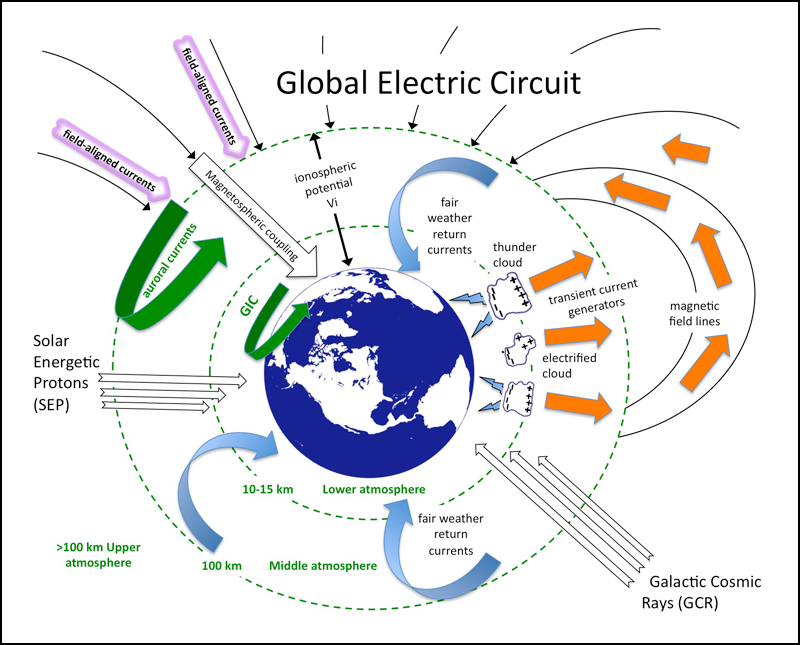Charged by thunderstorms and other weather phenomena, the global electrical circuit connects the entire planet.
Even on the fairest of days, without a single cloud in sight, an electric current flows from the sky to the ground. Driven by the difference in electrical potential between Earth’s surface and the ionosphere, it is a crucial component of the global electrical circuit (GEC), which connects many electrical processes in the atmosphere.
Lightning pumps charge into the atmosphere, as do galactic cosmic rays. Electrified clouds that don’t produce lightning shoulder a share of the burden equal to that of lightning. Dust, pollutants, and other particles in the lower troposphere also play a role in the global electrical circuit, as does the changing of the seasons.
“You’re looking at the total integrated effects of all the electrified weather across the globe,” said Michael Peterson, a staff scientist at Los Alamos National Laboratory in New Mexico who has studied the circuit with satellite lightning detectors. “People have described it as the electrical heartbeat of the planet.”
Researchers are paying more attention to that heartbeat these days. They are measuring the GEC in more detail, determining the roles of everything from layer clouds to the Sun’s magnetic cycle, and looking at incorporating the electrical circuit into global climate models. “Research on some questions was getting a bit stalled, but now we can use new technology, new methods, and new instruments to push it forward,” said R. Giles Harrison, a professor of atmospheric physics at the University of Reading in the United Kingdom.

Direct Currents, Alternating CurrentsLike the Time Lords of Doctor Who, Earth actually has two (electrical) heartbeats. A direct current (DC) circuit operates continuously across the entire planet, driven by everything from lightning to fair-weather currents. An alternating current (AC) circuit, on the other hand, is driven exclusively by lightning, which creates electromagnetic waves that circle the planet. Scientists are studying the relationship between the two circuits.....MUCH MORE
The GEC (DC version) was first proposed in 1920 by Scottish physicist C. T. R. Wilson, who later won the Nobel Prize for his invention of the cloud chamber. He suggested that Earth’s surface and the base of the ionosphere, a zone of ionized air at an altitude of 50–80 kilometers, formed the conductive shells of a spherical capacitor. The air served as a “leaky” insulator, allowing electric current to flow between the nested shells. Thunderstorms, Wilson wrote, served as the primary generator for this system. Electrified shower clouds, which maintain an electric charge but produce no lightning, also contributed to the circuit.....